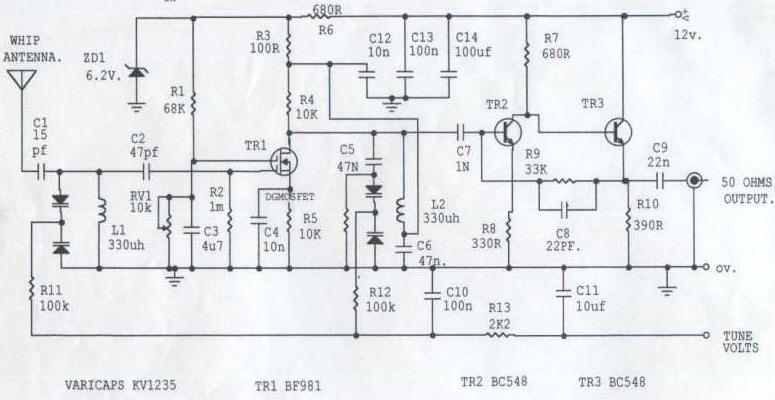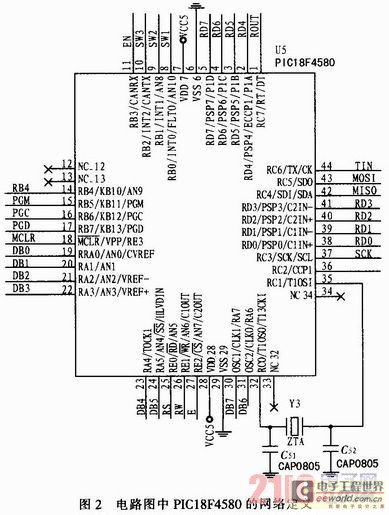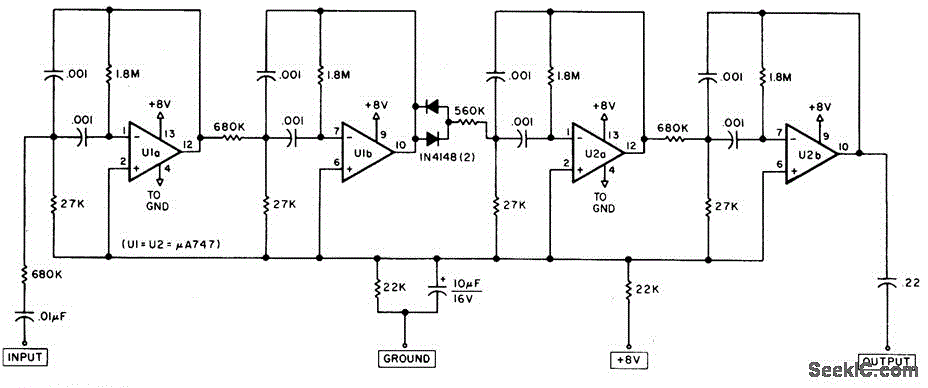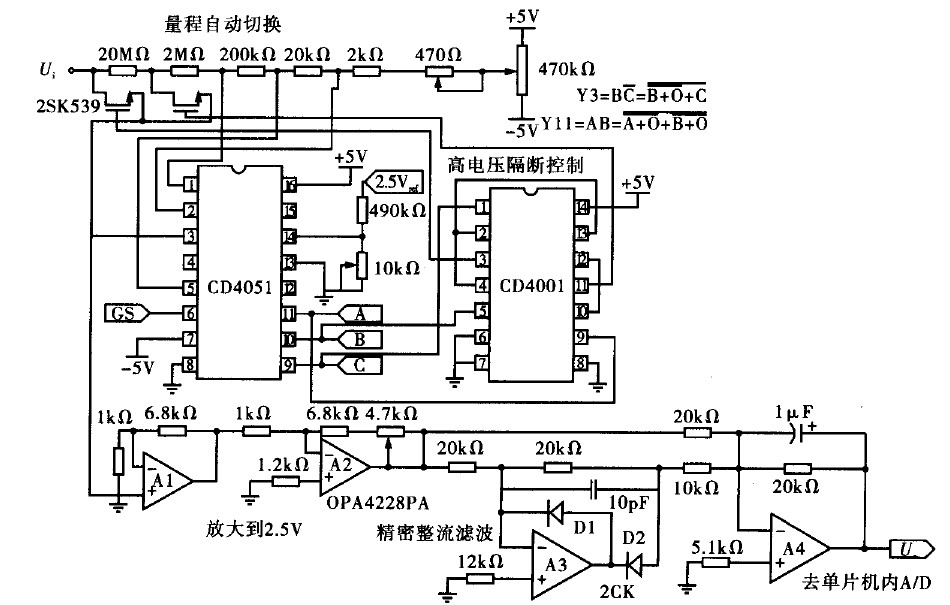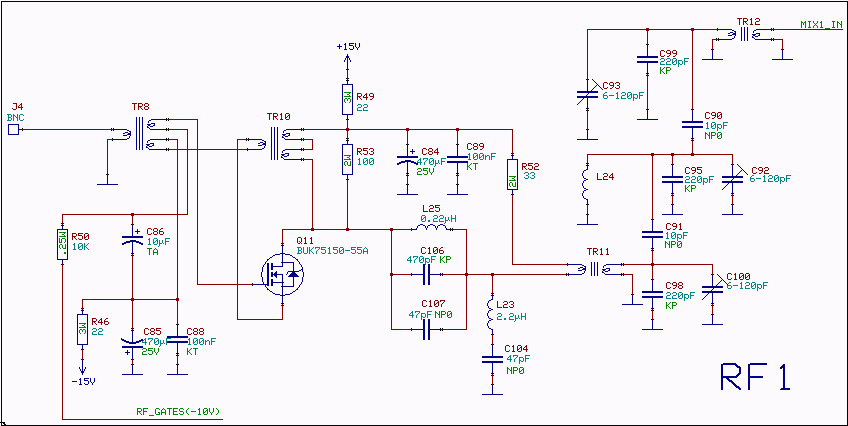
Active Filter Design with OpAmps
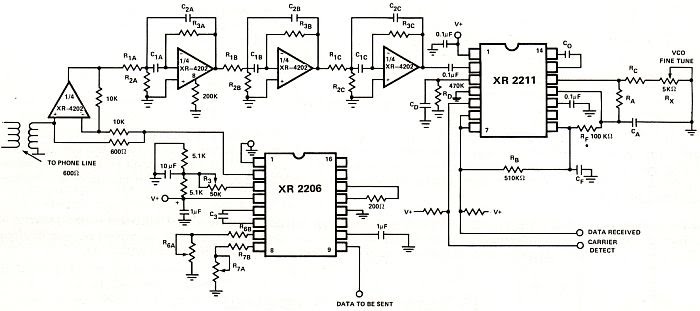
This application note aims to introduce filter designers to the basics of active filter design using monolithic integrated circuit operational amplifiers (op-amps). It includes a table of transfer functions and network equations for high-pass, low-pass, band-pass, and band-reject filters. Several design examples illustrate the respective advantages and limitations of various filter configurations. Special attention is given to the use of programmable quad operational amplifiers, such as the XR-4202, as active filter components in frequency-shift keying (FSK) modems. The availability of low-cost dual or quad operational amplifier ICs has made operational amplifier-based active filter techniques more economical compared to traditional passive filters. The recent introduction of programmable quad operational amplifiers like the XR-4202 and XR-346 has offered active filter designers the flexibility to externally program parameters such as gain-bandwidth product, supply current, input bias current, input offset current, input noise, and slew rate. This allows users to balance bandwidth against supply current or optimize noise performance. The characteristics of operational amplifiers are crucial in active filters, as they help overcome challenges related to low input impedance, high output impedance, and low gain. Operational amplifiers deliver the necessary response for various filter types. Common filter configurations include multiple feedback, state-variable, bi-quad, and Sallen-Key, which can achieve high-pass, band-pass, and low-pass filter functions, providing designers with standard filter responses such as Butterworth, Chebyshev, and Bessel. Figure 9 displays a circuit schematic for a complete "Originate or Answer" modem. The values for the XR-2206 are provided in Table 6. In an originate modem, the transmitting frequencies are 1070 Hz and 1270 Hz, while the receiving frequencies are 2025 Hz and 2225 Hz for space and mark, respectively. The first op-amp in Figure 9 is configured as an active hybrid, designed to offer a minimum of 10 dB isolation from transmit to receive, while introducing a 3 dB gain from the line to the receiver.
The design of active filters using operational amplifiers (op-amps) is a crucial aspect of modern electronic systems, particularly in communication applications such as FSK modems. The operational amplifier serves as the foundational element in these filters, allowing for precise control over various parameters that influence filter performance.
The implementation of programmable quad operational amplifiers enhances the versatility of active filter designs. By allowing designers to adjust the gain-bandwidth product, supply current, and other characteristics, these amplifiers can be tailored to meet specific application requirements. This programmability is especially beneficial in scenarios where trade-offs must be made between bandwidth and power consumption.
In practical applications, the choice of filter topology is essential. The multiple feedback filter configuration, for example, provides excellent performance in terms of selectivity and stability, making it suitable for many applications. The state-variable filter, on the other hand, offers the capability to provide simultaneous low-pass, high-pass, and band-pass outputs, which can be advantageous in complex signal processing tasks.
The Sallen-Key topology is another popular choice due to its simplicity and effectiveness in achieving desired filter responses. Each of these configurations can be designed to meet specific frequency response requirements, such as Butterworth for maximally flat response, Chebyshev for sharper roll-off, or Bessel for linear phase characteristics.
In the context of the modem circuit described, the operational amplifier's role in providing isolation and gain is critical. The active hybrid configuration ensures that the transmit and receive paths are adequately isolated to prevent interference, while also amplifying the signal as needed. The specified frequencies for transmission and reception are carefully chosen to optimize performance and ensure reliable communication.
Overall, the integration of programmable operational amplifiers into active filter designs represents a significant advancement in electronic circuit design, providing designers with the tools necessary to create efficient and effective filtering solutions for a wide range of applications.This application note is intended to familiarize the filter designer with the fundamentals of active filter design, using monolithic IC op amps. It presents a table of transfer functions and network equations for high-pass, low-pass, band-pass and band-reject filters.
Several design examples are given to illustrate the respective merits and limita tions of various filter configurations. Particular emphasis is given to applications of programmable quad operational amplifiers, such as the XR-4202, as an active filter element in FSK Modems. The availability of low cost dual or quad operational amplifier IC`s have made the operational amplifier based active filter techniques cost effective over conventional passive filters.
The recent availability of programmable quad operational amplifiers such as the XR-4202 or the XR-346 have provided the active filter designer with the flexibility to externally program gain-bandwidth product, supply current, input bias current, input offset current, input noise and the slew rate. The user, therefore, can trade off bandwidth for supply current or optimize the noise figure. Likewise, other amplifier characteristics can be programmed for a specific Since the operational amplifier plays such a key role in the active filter, its characteristics are of prime importance.
By using operational amplifiers as the basic gain stage of the active filter, problems previously encountered due to low input impedance, high output impedance and low gain are virtually eliminated. Operational amplifiers provide the required response for various filter types. Some of the more popular filters are multiple feedback, state variable, bi-quad and Sallen Key which can be used to obtain high pass, band pass and low pass filter functions (and which are capable of giving the designer all of the standard filter responses, i.
e. , Butterworth, Chebychev, Bessel, etc. ) Figure 9 above shows a circuit schematic for a complete "Originate or Answer" modem. The values for the XR-2206 are given in Table 6. For an originate modem the transmitting frequencies are 1070 Hz and 1270 Hz, the receiving frequencies are 2025 Hz and 2225 Hz, for a space and mark respectively. The first op amp in Figure 9 is connected as an active hybrid which should supply a minimum of 10 dB isolation from transmit to receive, while adding 3 dB gain from the line to the receiver.
🔗 External reference
The design of active filters using operational amplifiers (op-amps) is a crucial aspect of modern electronic systems, particularly in communication applications such as FSK modems. The operational amplifier serves as the foundational element in these filters, allowing for precise control over various parameters that influence filter performance.
The implementation of programmable quad operational amplifiers enhances the versatility of active filter designs. By allowing designers to adjust the gain-bandwidth product, supply current, and other characteristics, these amplifiers can be tailored to meet specific application requirements. This programmability is especially beneficial in scenarios where trade-offs must be made between bandwidth and power consumption.
In practical applications, the choice of filter topology is essential. The multiple feedback filter configuration, for example, provides excellent performance in terms of selectivity and stability, making it suitable for many applications. The state-variable filter, on the other hand, offers the capability to provide simultaneous low-pass, high-pass, and band-pass outputs, which can be advantageous in complex signal processing tasks.
The Sallen-Key topology is another popular choice due to its simplicity and effectiveness in achieving desired filter responses. Each of these configurations can be designed to meet specific frequency response requirements, such as Butterworth for maximally flat response, Chebyshev for sharper roll-off, or Bessel for linear phase characteristics.
In the context of the modem circuit described, the operational amplifier's role in providing isolation and gain is critical. The active hybrid configuration ensures that the transmit and receive paths are adequately isolated to prevent interference, while also amplifying the signal as needed. The specified frequencies for transmission and reception are carefully chosen to optimize performance and ensure reliable communication.
Overall, the integration of programmable operational amplifiers into active filter designs represents a significant advancement in electronic circuit design, providing designers with the tools necessary to create efficient and effective filtering solutions for a wide range of applications.This application note is intended to familiarize the filter designer with the fundamentals of active filter design, using monolithic IC op amps. It presents a table of transfer functions and network equations for high-pass, low-pass, band-pass and band-reject filters.
Several design examples are given to illustrate the respective merits and limita tions of various filter configurations. Particular emphasis is given to applications of programmable quad operational amplifiers, such as the XR-4202, as an active filter element in FSK Modems. The availability of low cost dual or quad operational amplifier IC`s have made the operational amplifier based active filter techniques cost effective over conventional passive filters.
The recent availability of programmable quad operational amplifiers such as the XR-4202 or the XR-346 have provided the active filter designer with the flexibility to externally program gain-bandwidth product, supply current, input bias current, input offset current, input noise and the slew rate. The user, therefore, can trade off bandwidth for supply current or optimize the noise figure. Likewise, other amplifier characteristics can be programmed for a specific Since the operational amplifier plays such a key role in the active filter, its characteristics are of prime importance.
By using operational amplifiers as the basic gain stage of the active filter, problems previously encountered due to low input impedance, high output impedance and low gain are virtually eliminated. Operational amplifiers provide the required response for various filter types. Some of the more popular filters are multiple feedback, state variable, bi-quad and Sallen Key which can be used to obtain high pass, band pass and low pass filter functions (and which are capable of giving the designer all of the standard filter responses, i.
e. , Butterworth, Chebychev, Bessel, etc. ) Figure 9 above shows a circuit schematic for a complete "Originate or Answer" modem. The values for the XR-2206 are given in Table 6. For an originate modem the transmitting frequencies are 1070 Hz and 1270 Hz, the receiving frequencies are 2025 Hz and 2225 Hz, for a space and mark respectively. The first op amp in Figure 9 is connected as an active hybrid which should supply a minimum of 10 dB isolation from transmit to receive, while adding 3 dB gain from the line to the receiver.
🔗 External reference
